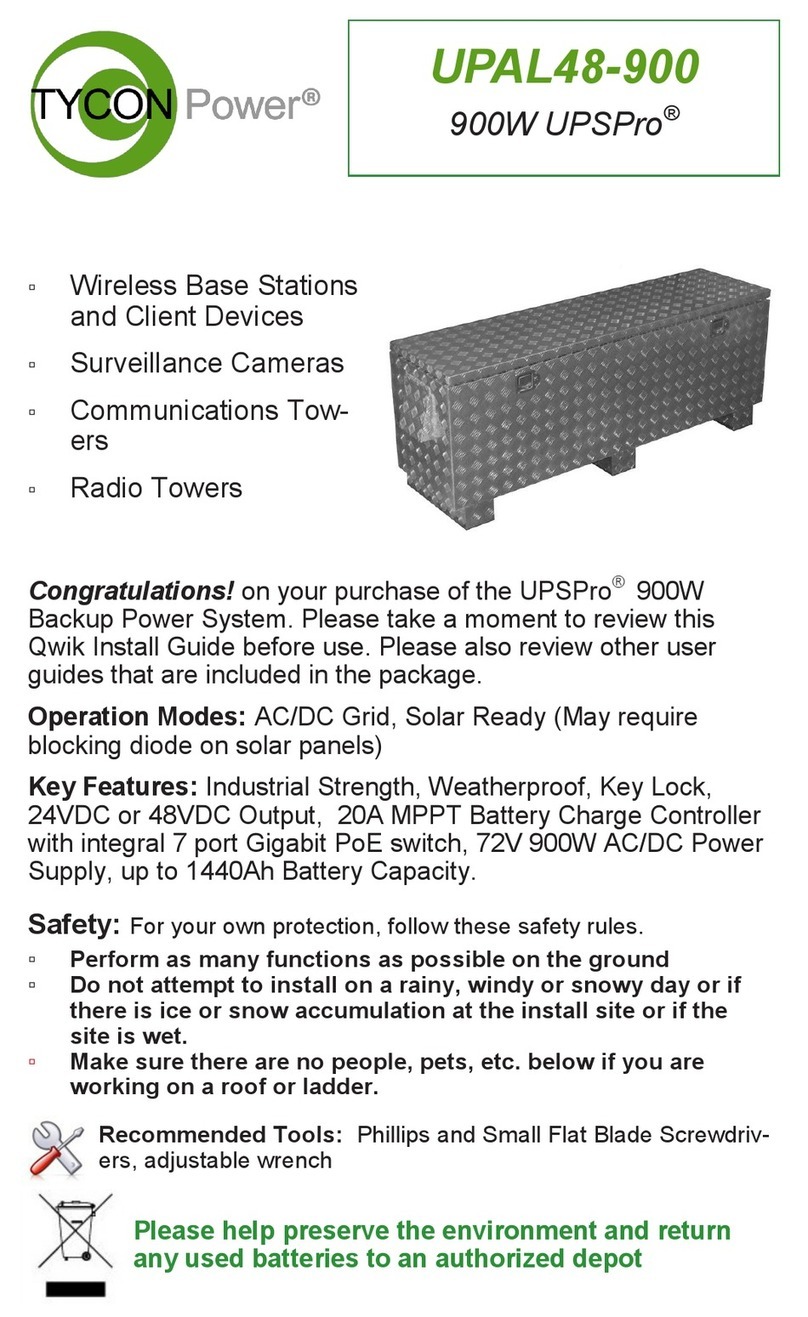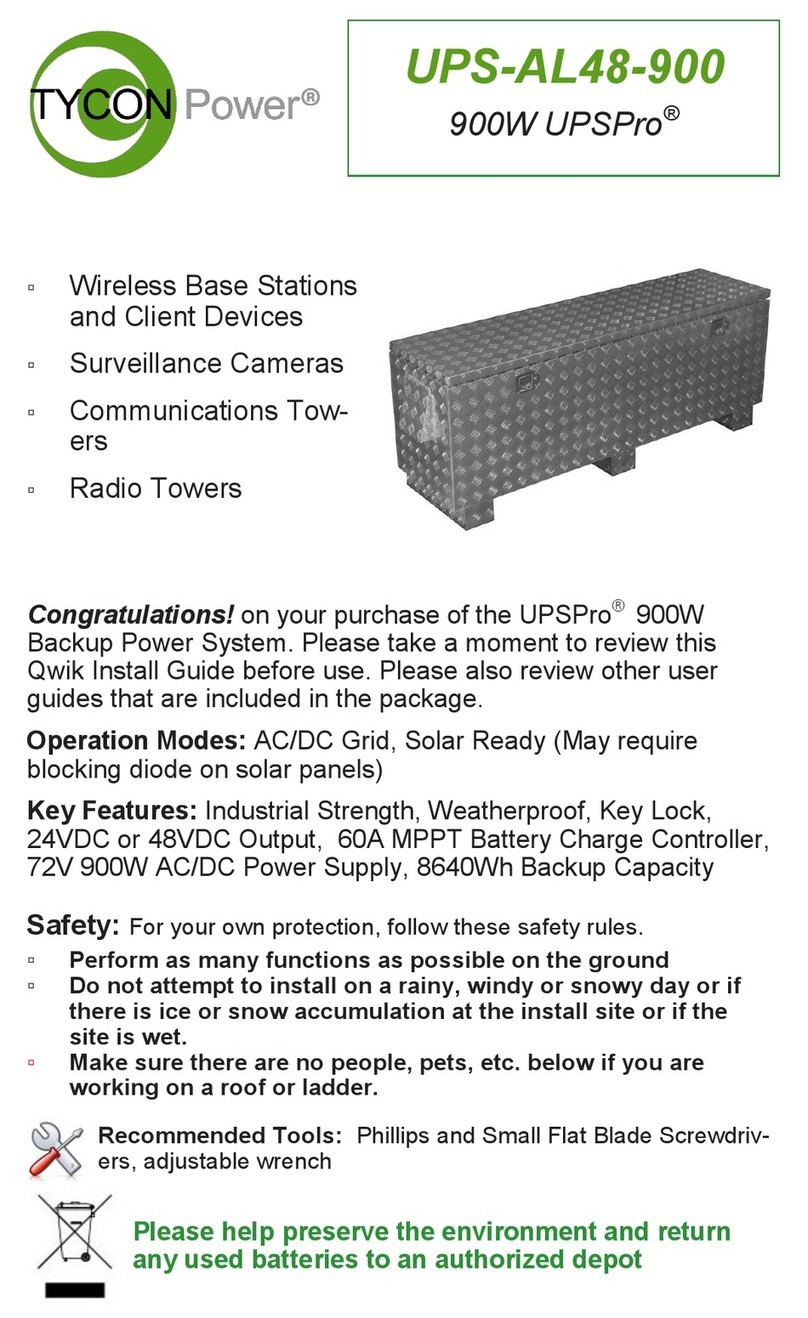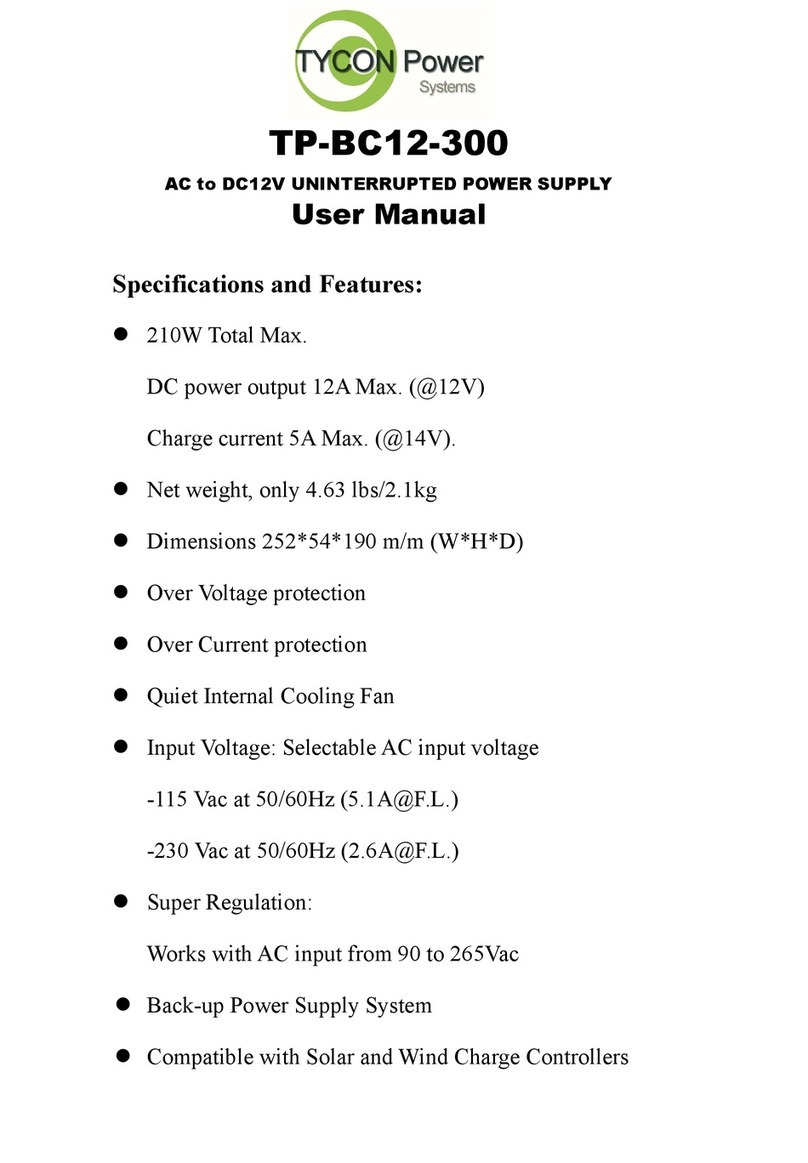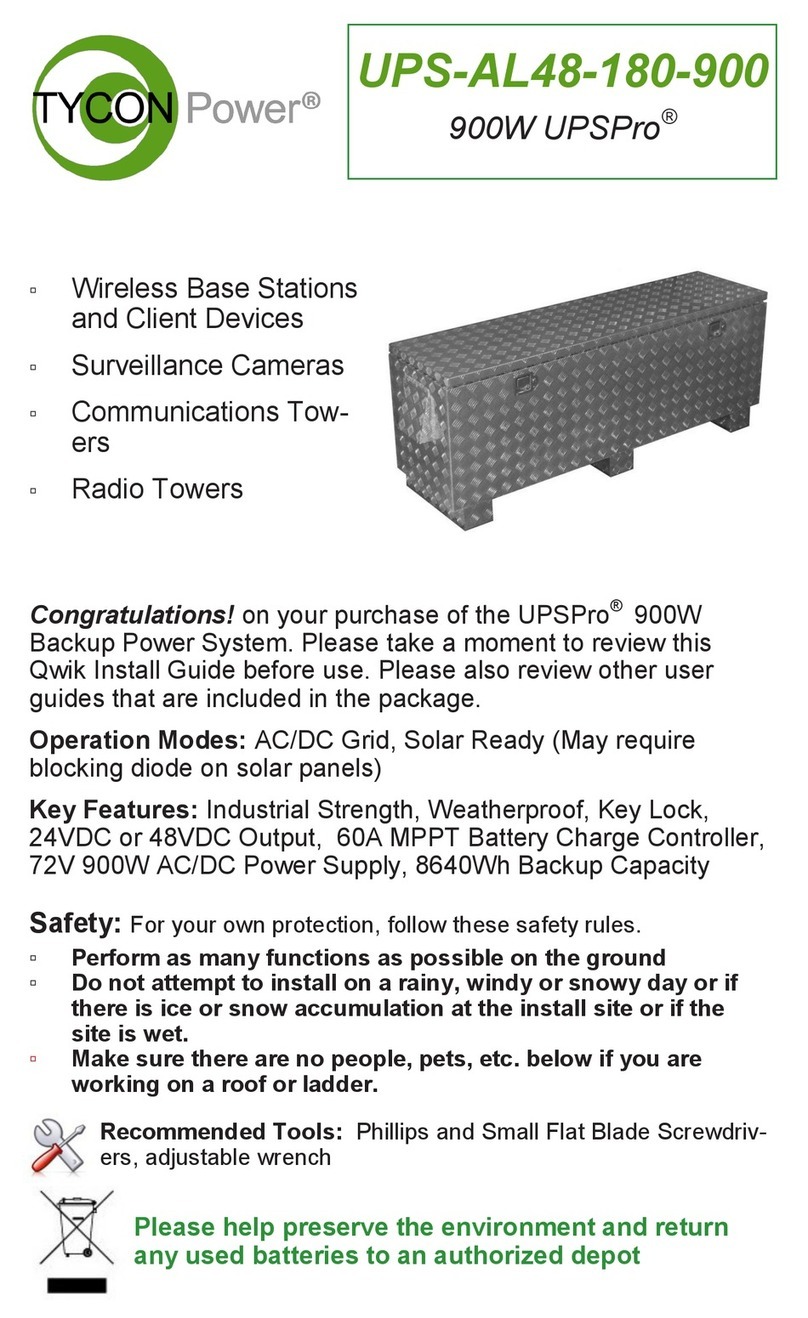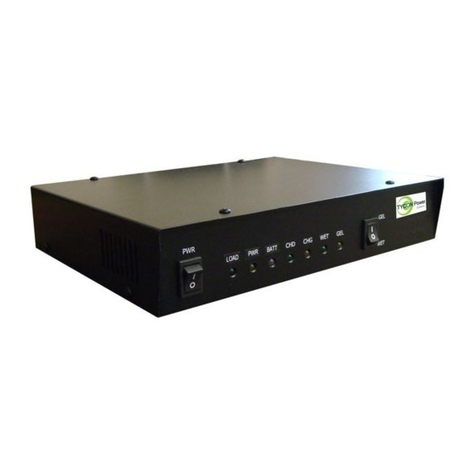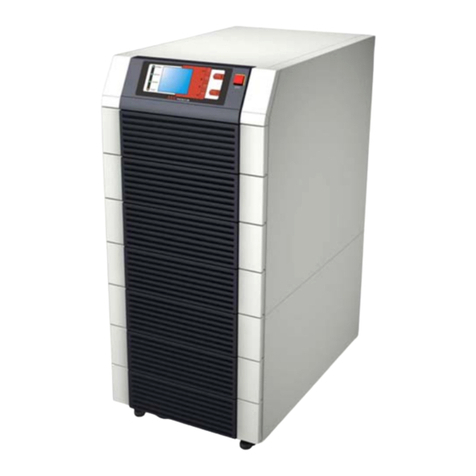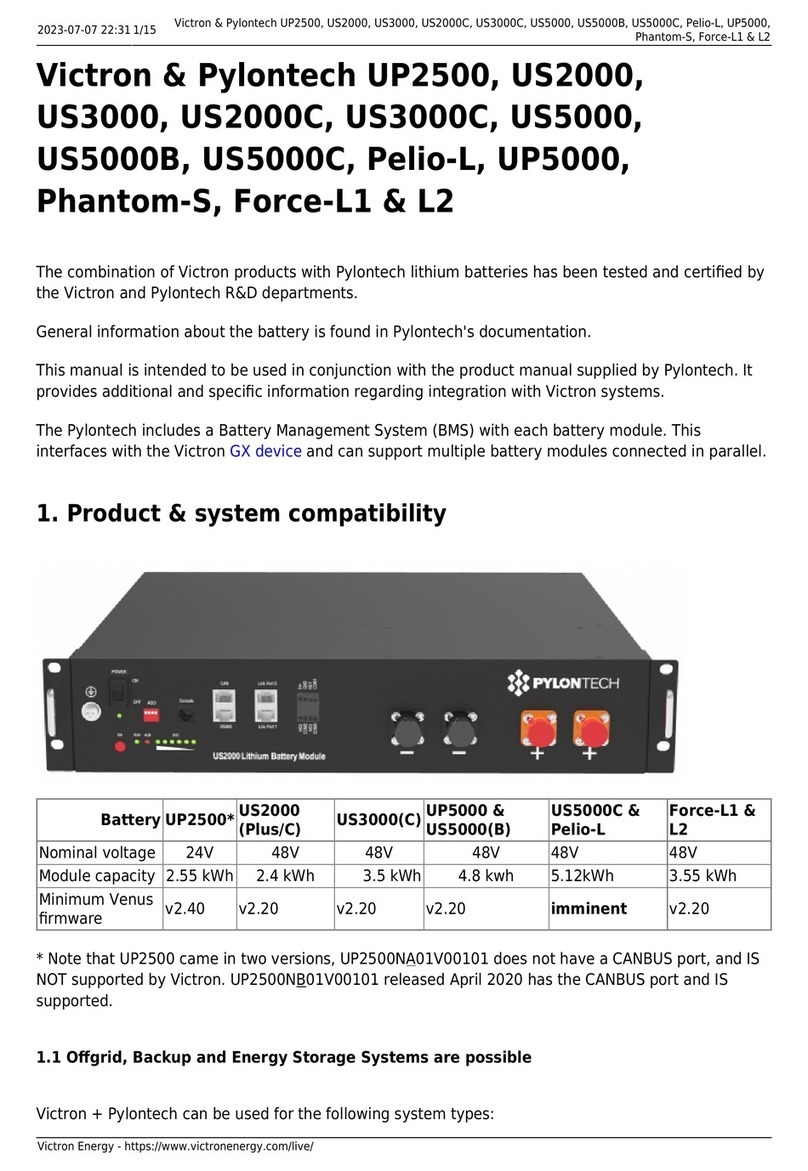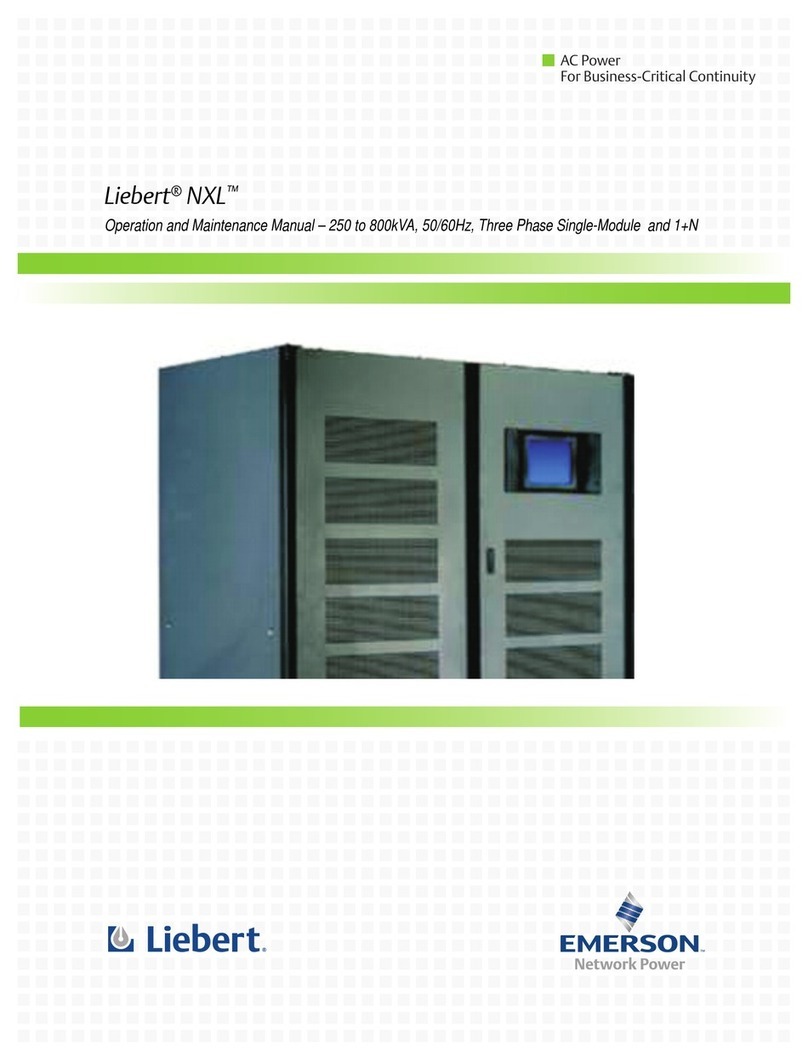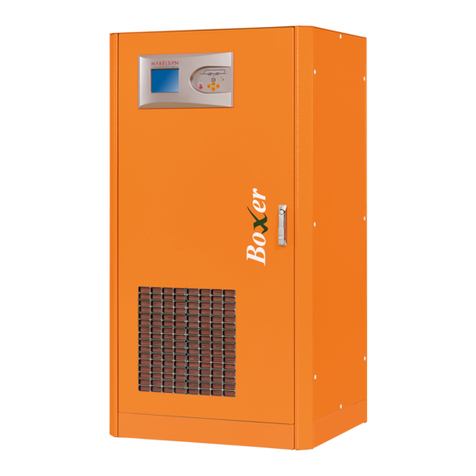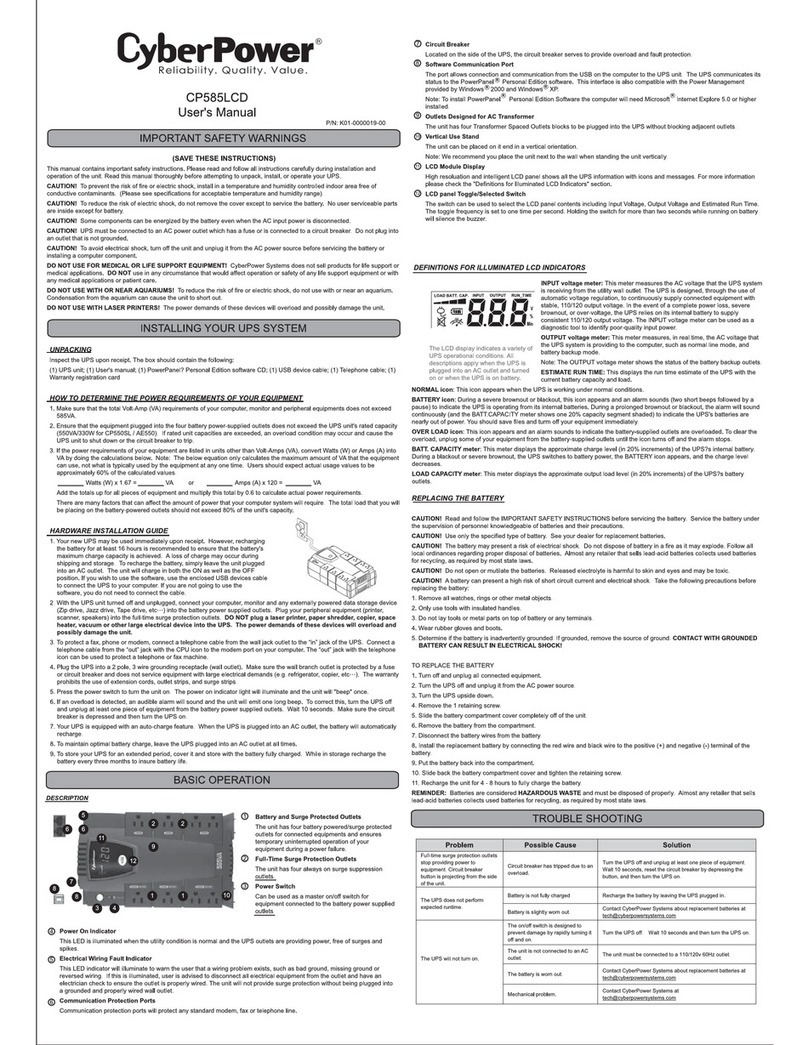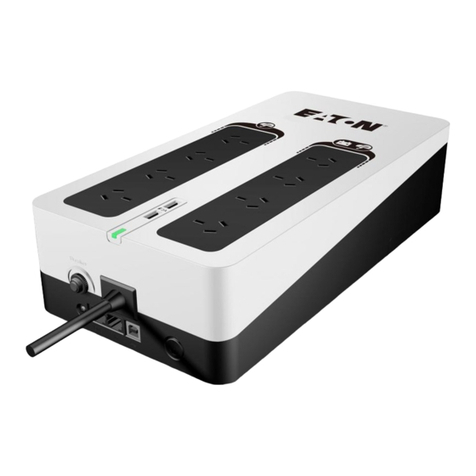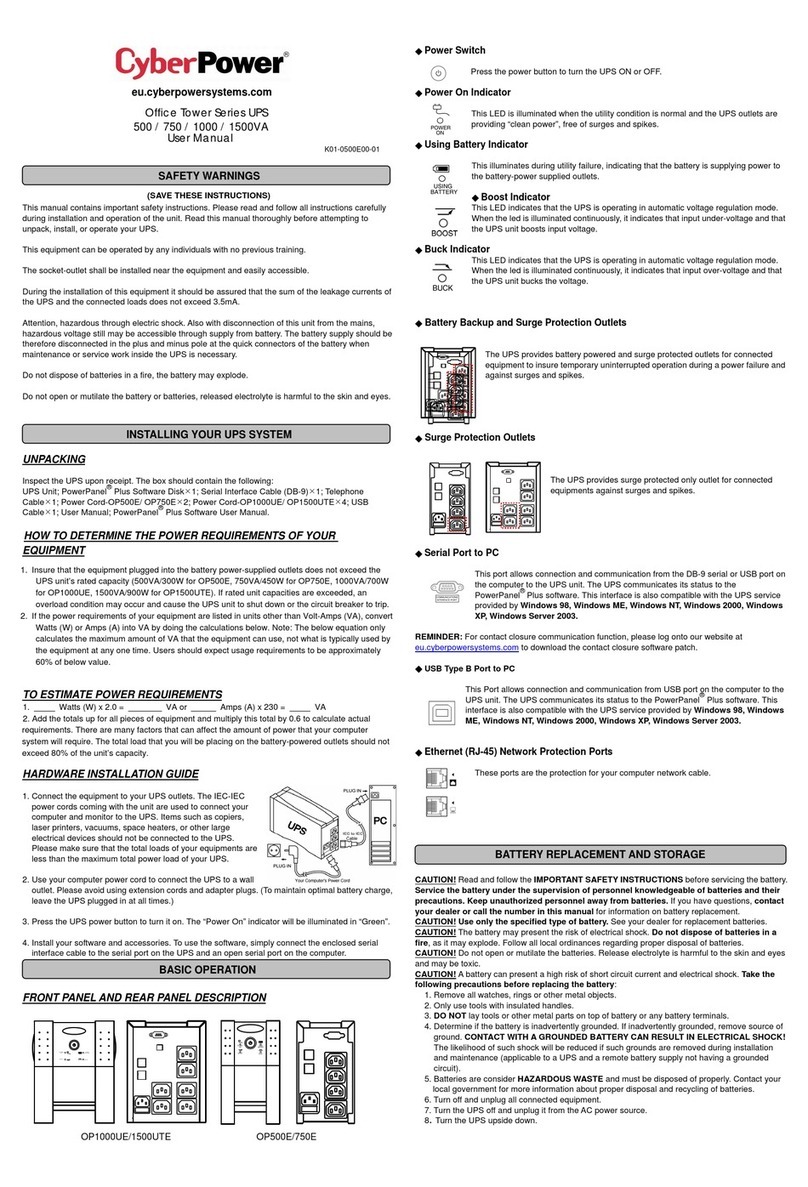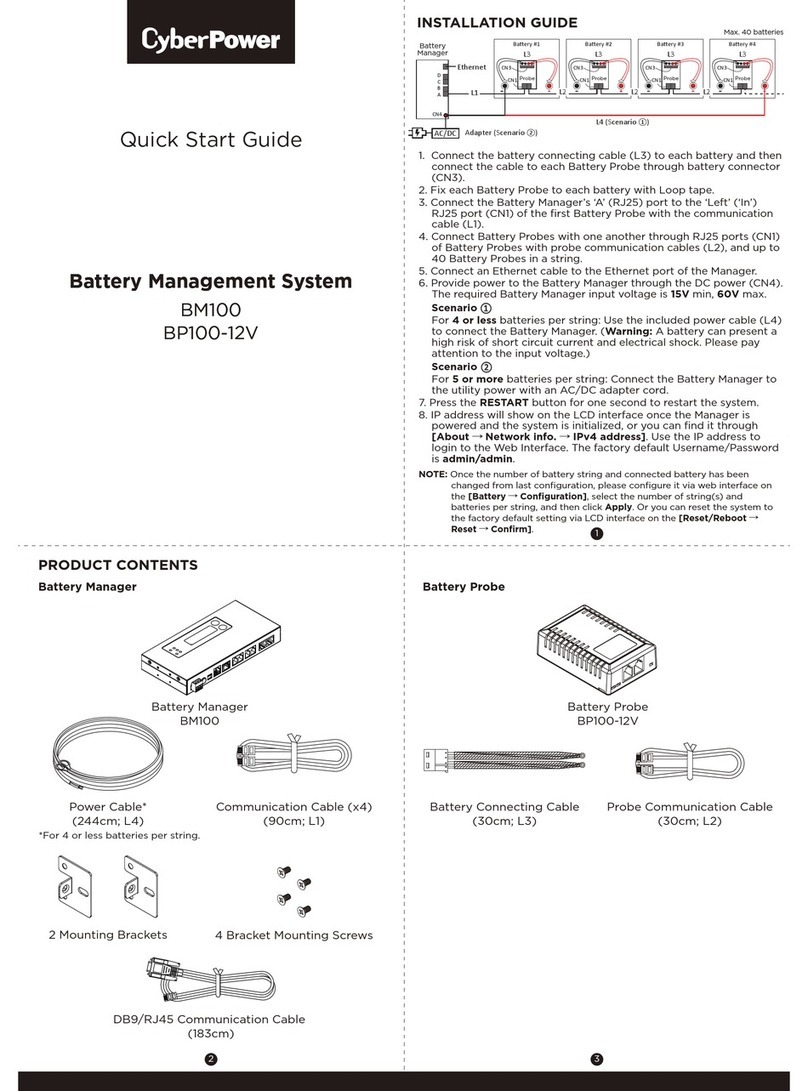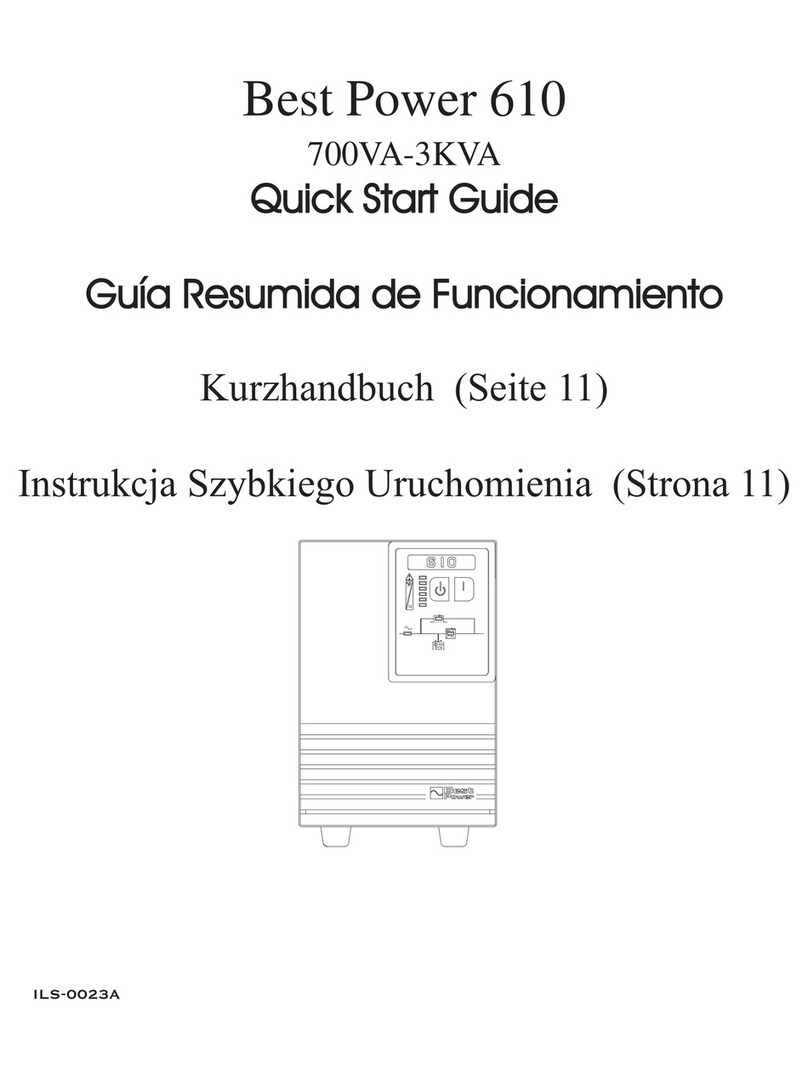5
STEP 11: When a battery is connected properly the BATT LED will be
green. Make sure that the Battery Type is selected correctly and never
change the battery type during charging or this could damage the con-
troller. Use GEL for GEL or AGM batteries. Use WET for standard lead
acid wet cells. Tycon recommends using only GEL or AGM batteries for
best performance.
The controller has battery overdischarge protection to disconnect the
load if the battery voltage (charge) is too low. The LOAD LED will be on
when the battery charge is within safe limits and the LOAD output is
turned on.
STEP 12: Switch off controller and connect AC to the controller. Be
sure to follow local regulations for outdoor 120/240VAC connections.
STEP 13: Connect the load to the controller LOAD terminals. Be sure
to observe proper polarity. Switch on the controller to activate the
charging.
STEP 14: Plug or Tighten all wire feedthrus. If they don’t tighten on a
small diameter wire, you can wrap some electrical tape around the wire
in the seal area to increase its diameter and make a better seal. The
enclosure needs some small amount of venting so be sure NOT to seal
all holes and feedthrus with silicon.
STEP 15: Make sure lid gasket is clean and free from any particles,
then carefully close the cover, making sure that wires are clear of the
seam and hinge area. Use the special key to close the two cover locks.
TECH CORNER
Additional Information you may find useful
1. CONTROLLER: The controller turns off power to the load at 10.7V
for the 12V model and 21.5 for the 24V model and 40V for the 48V
model. It reconnects when the battery reaches 12.6V for the 12V model
and 25.2V for the 24V model and 51V for the 48V model. This protects
battery from overdischarge and increases battery life and performance.
Note: The load will turn on immediately as soon as AC power is re-
stored.
2. CAPACITY: The UPSPro UPS-ST12 is rated at 120W load output.
The UPS-ST24 and UPS-ST48 are also rated at 120W load output.
LED Indicators LOAD (Load Power is Turned On = Green)
PWR (AC Power On = Yellow)
BATT ( Battery is Connected = Green)
CHD ( Battery is Fully Charged = Green)
CHG ( Battery is Charging = Yellow)
WET / GEL – Switch is positioned to WET(Green) or GEL
(Yellow)
